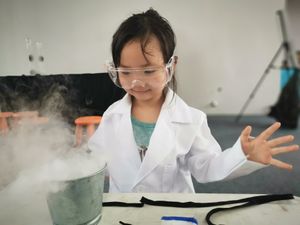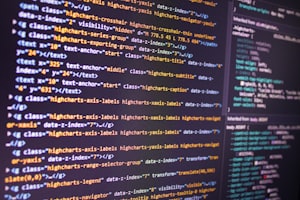Scientific research has been estimated to produce 5.5 million tonnes of plastic waste globally. Recognising that the world is facing a climate emergency University College London recently announced a slate of measures aimed at reducing the university's carbon footprint—including eliminating single-use plastics in labs. I met with two UCL staff members who are involved, Cristina Azevedo and Martin Farley, to find out more.
Cristina Azevedo has been a post doc at the Laboratory of Molecular Cell Biology (LMCB)at University College London for 14 years. During her time at the LMCB, Cristina was one of the co-founders and head of the ‘LMCB Greeners’, a Committee that aims to make research at the Institute more sustainable. [The author is also a member of LCMB Greeners]. Martin works as a sustainable lab advisor at University College London (UCL) and King’s College London (KCL). He was the first person in the UK to work in this capacity, originally in Edinburgh. Martin also designed the Laboratory Efficiency Assessment Framework (LEAF) that provides guidance to laboratories as to reduce their environmental impact and is also used by the LMCB Greeners.
Our conversation, edited for clarity and length, focused on how institutions around the world can follow UCL's example and adopt measures for sustainability.
Cristina, you are one of the co-founders of the LMCB Greeners. What are the LMCB Greeners?
CA: We are a group of people that are interested in sustainability who answered a call from UCL to start looking at sustainability in laboratories and offices in our institute. Basically we look at labs and offices with the perspective of sustainability and try to address issues that we see or that other people from LMCB bring up to us.
And what are things the Greeners do?
CA: We initially started with 10 tasks out of a list provided by UCL. We chose tasks that we could do in the first year and which would immediately make a difference. People started noticing that there was a group doing things. It was fun, we divided ourselves into small groups, decided what each person was going to do and then we just went on and did it and met every few weeks to discuss problems and see what the results had been so far. And more recently this list changed into the Laboratory Efficiency Assessment Framework (LEAF).
Martin, Christina mentioned LEAF. Can you tell us more about this?
MF: LEAF is our attempt at making sustainability easy for labs and providing a standard for it. We wanted to provide a framework with different tiers, Gold, Silver and Bronze and say ‘Here is what you should do to reach these levels’. The LMCB has been fantastic in its efforts, but not every institute knows exactly what to do and LEAF is there to provide guidance and standardization. We wanted to provide means to estimate how much labs were saving in both carbon and financial terms. We hope that funding bodies will take LEAF on board and take lab performance into consideration when awarding research grants. The ultimate goal for me is to provide funders with the means to drive sustainability from their position. There is a reason we all do health and safety and we don’t do sustainability, because the former is required and sustainability is voluntary.
Seeing as LEAF is currently a UK approach and we have an international audience; can institutions outside of the UK participate?
MF: Definitely! Last year an Irish university participated, and a few more international institutions have registered interest. If any University in the EU, US, or anywhere else wants to participate, get in touch and you can join! Right now the pilot is completely free and I am hoping that it will remain so though I can't promise it. The idea is that the funding bodies would recognize the value of it and would fund it because LEAF saves so much money for research that it hopefully will be integrated into funding schemes.
Cristina, what would you say is the single most impactful change you and the Greeners have made?
CA: We went from consuming approximately 150 single-use coffee cups per day to less than twenty, by implementing a cup charge! But I am most proud of the glass vials that we use to substitute falcon tubes. I went from 150 Falcon tubes a week to zero, consider that in a month and then in a year and then three years since we implemented it. Where we still use Falcons, we now order them bagged rather than in polystyrene racks.
And what was the most difficult thing to change at the LMCB?
CA: I think it’s the continuation… making sure that all the efforts we did in the beginning are still being followed. Research is a very high turnover job, there are always new people so your work is never finished. You have to keep educating people and giving seminars talking about sustainability because people forget and are not always on top of it. You just have to do it with a friendly approach.
Do both of you have recommendations for people who want to get engaged in sustainability in their department?
CA: These days people cannot close their eyes to climate change. We can see and feel it. I think it’s a perfect time to do something about it! Try to get a group of people that are enthusiastic, that are really keen to change things. Talk to senior management. I think it is important for them to be aware of your existence and what you want to do. You can always play the card that you will save the institute a lot of money, which you will. Start by prioritizing, change things that are achievable and visible in the short term so that people see that you are actually doing something.
MF: Check out LEAF! Of course I am biased having put some much effort into it. But get in touch if you want! We have tried to make LEAF as applicable as possible with as few criteria as possible. Everybody knows to turn off equipment and lights but people rarely think of a new induction and putting in a new exit policy to track samples when people leave which use up precious space in freezers and liquid nitrogen storage.
We also need to start thinking about embodied carbon versus operational carbon. What that means is reusing things more, like reusing equipment and buying equipment that lasts.
Lastly, it is important that people are thinking about where their data is going, and that means sharing their negative results. Such results require just as many resources as positive results. Reproducible science is sustainable science! Try to avoid excessive repetition of experiments and if you do repeat, share those bad results in a way that allows other people to learn from them.
What are easy things to change for people to get started with?
CA: I think getting people to use mugs was quite easy. Improving the waste stream should be easy. With education and posters you can make sure that people are putting the correct stuff in the right bins and recycle properly. Keep on informing people and directly intercept when you see someone doing it wrong, just tell them in a nice way: ‘Look guys I found this here, it shouldn’t be there.’
MF: Close your fume cupboard stash, consider changing the temperature of the freezer from -80C to -70C that saves 25-30% on their energy consumption of the freezer. Each one of those freezers uses as much electricity as a house. Take your packaging out of clinical waste. Use glass instead of plastic where you can. Don’t put stuff through clinical waste unless it needs to. Don’t buy things unless you really need them. And like Cristina said, consider what people are taught when coming into a lab. It’s a free thing to do, just to tell people about these things when they come in and equally track what people leave behind when they leave.
Thank you so much for taking the time! Is there anything else you would like to say that we haven’t covered so far?
CA: Endurance is something that you have to have. You need to make this a battle that you want to fight for… in a nice way.
MF: Go out with people from your lab and have a good time with them. Having a nice environment, chatting with people... what you don’t want is sustainability to become that thing where people are at each other’s heels. We shouldn’t throw stones at each other in this space. So make it a positive experience for everybody.







